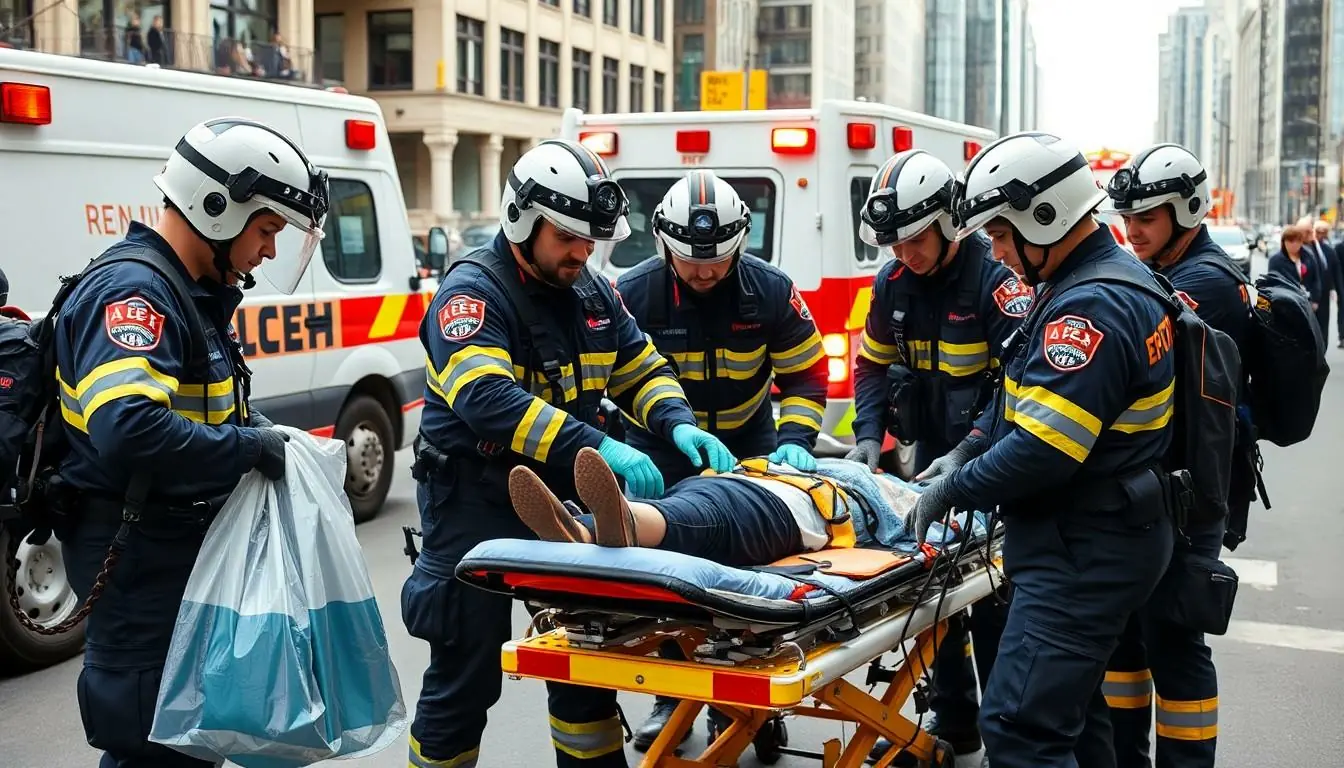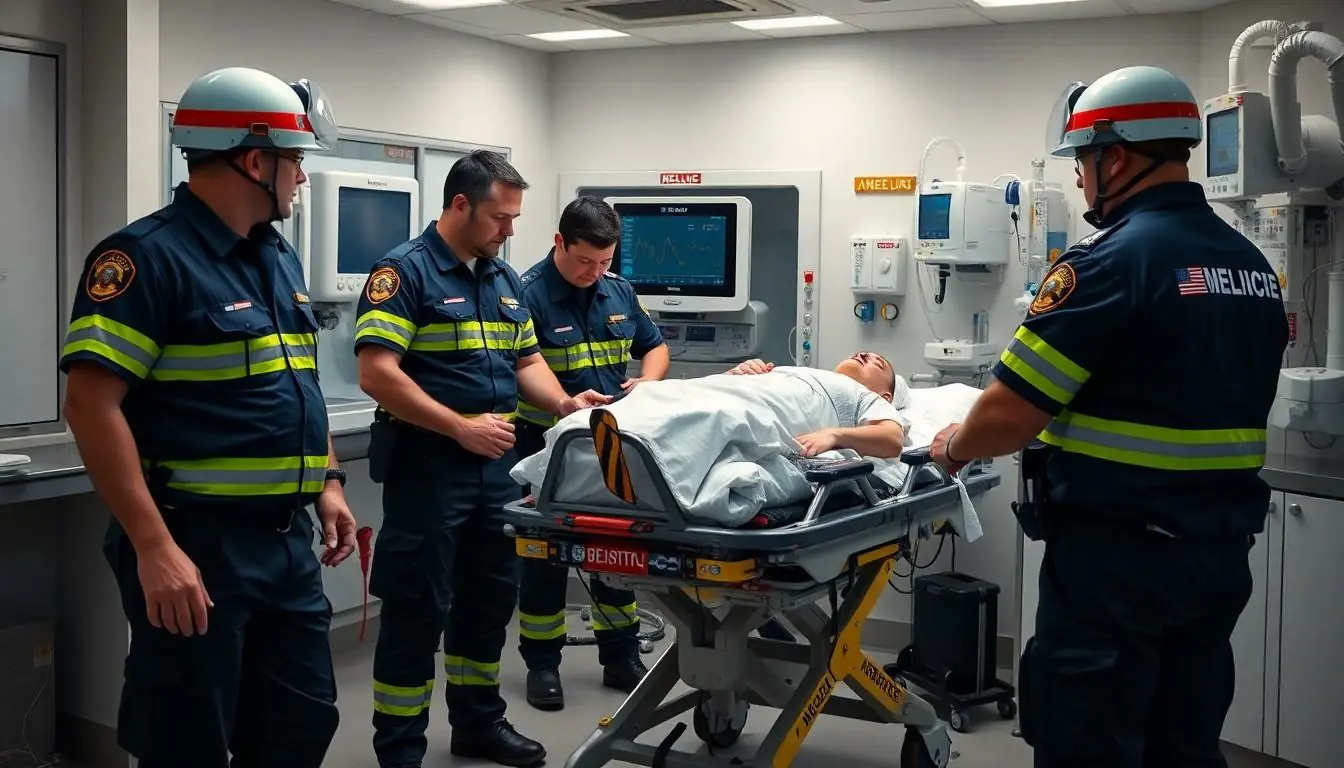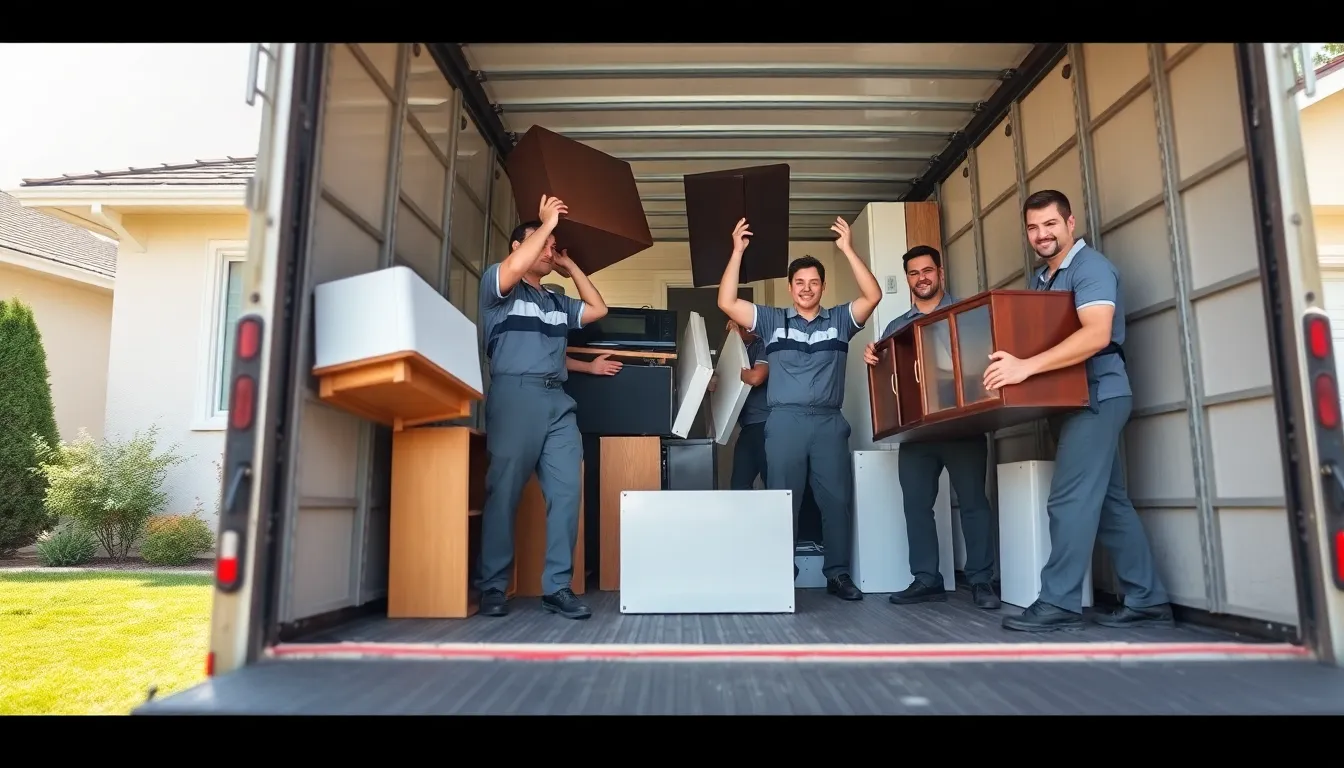When disaster strikes, every second counts. Emergency care programs serve as the vital lifeline between crisis and recovery, providing immediate medical attention when it’s needed most. These specialized programs transform chaos into coordinated action, ensuring that patients receive swift, professional care during their most vulnerable moments.
Healthcare facilities across the United States have developed robust emergency care systems that operate 24/7, ready to tackle everything from heart attacks to traumatic injuries. These programs don’t just save lives – they represent the pinnacle of medical readiness, combining cutting-edge technology with highly trained professionals who thrive under pressure. It’s like having a medical SWAT team on standby, except instead of tactical gear, they’re armed with stethoscopes and a wealth of life-saving knowledge.
Table of Contents
ToggleUnderstanding Emergency Care Programs
Emergency care programs form comprehensive medical response systems designed to deliver immediate healthcare services during critical situations. These programs integrate multiple components coordinated to provide rapid assessment treatment delivery while maintaining high standards of patient care.
Core Components of Emergency Care
The foundation of emergency care programs consists of five essential elements: emergency medical dispatch trained personnel specialized equipment medical facilities protocols. Emergency medical dispatch centers operate 24/7 receiving calls prioritizing responses coordinating resources. Trained personnel include paramedics emergency medical technicians physicians nurses who possess specific certifications in emergency medicine. Medical facilities encompass trauma centers emergency departments urgent care centers equipped with diagnostic imaging systems life-support equipment. Specialized equipment ranges from advanced cardiac monitors mobile intensive care units to portable defibrillators. Standardized protocols guide assessment treatment documentation ensuring consistent quality care across all emergency situations.
Types of Emergency Response Systems
Emergency response systems exist in three primary categories: Basic Life Support Advanced Life Support Mobile Integrated Healthcare. Basic Life Support services focus on immediate lifesaving procedures CPR basic wound care patient transport. Advanced Life Support provides complex medical interventions including cardiac monitoring medication administration advanced airway management. Mobile Integrated Healthcare represents community-based programs offering preventive care chronic disease management reducing emergency department visits. Each system operates under specific protocols utilizing distinct equipment staffing requirements based on service level designation. Local demographics geographic considerations determine the distribution deployment of these response systems within communities.
Key Elements of Successful Emergency Care Programs
Effective emergency care programs integrate three essential components to deliver life-saving services. These components work together to create a comprehensive system that responds to medical emergencies with precision and efficiency.
Medical Personnel and Training
Emergency care programs employ certified medical professionals with specialized trauma training. Paramedics complete 1,200 to 1,800 hours of training in advanced life support techniques including cardiac monitoring, medication administration and airway management. Emergency Medical Technicians (EMTs) undergo 120-150 hours of basic life support training focusing on patient assessment, CPR and wound care. Medical directors oversee clinical operations while providing ongoing education through monthly skills assessments and quarterly scenario-based drills. Personnel maintain certifications through 24-48 hours of annual continuing education.
Equipment and Resources
Modern emergency care facilities maintain specific equipment ratios based on call volume and response areas. Each ambulance carries $250,000+ in medical devices including cardiac monitors, ventilators and medication pumps. Emergency departments stock trauma bays with specialized tools: crash carts, surgical instruments and diagnostic imaging machines. Mobile units feature GPS tracking systems linked to dispatch centers for real-time location monitoring. Supply management systems track inventory levels ensuring 99% equipment availability.
Communication Systems
Digital communication networks connect emergency response teams through integrated platforms. Computer-aided dispatch systems process 911 calls within 60 seconds using automated priority algorithms. Radio networks operate on dedicated emergency frequencies with 98% uptime reliability. Mobile data terminals in response vehicles receive patient information and hospital capabilities in real-time. Telemedicine connections enable direct consultation with specialists during transport reducing treatment delays by 15 minutes on average.
Emergency Care Program Implementation
Implementing emergency care programs requires systematic planning coupled with precise execution strategies. The process integrates multiple components working in harmony to create an effective emergency response system.
Planning and Assessment
Emergency care program implementation starts with comprehensive community needs analysis. Healthcare administrators conduct demographic studies examining population density areas combined with historical emergency data patterns. A detailed resource inventory identifies existing medical facilities staffing levels equipment availability. The assessment phase includes:
- Geographic mapping of service coverage areas
- Response time analysis for different locations
- Population health risk evaluations
- Resource gap identification in current systems
- Budget allocation requirements for program components
Establishing Protocols
Emergency care protocols create standardized response procedures for medical emergencies. Each protocol addresses specific scenarios from cardiac arrests to trauma incidents with clear step-by-step guidelines. Medical directors develop these protocols based on:
- Patient care algorithms for different emergency types
- Communication channels between responders dispatchers hospitals
- Documentation requirements for patient records
- Transport criteria for various medical facilities
- Equipment usage guidelines for emergency procedures
- Medication administration protocols for different scenarios
Quality Control Measures
Quality control systems monitor emergency care program effectiveness through data-driven metrics. Performance indicators track response times patient outcomes staff compliance. Key measurement tools include:
| Quality Metric | Target Range | Monitoring Frequency |
|---|---|---|
| Response Time | 8-10 minutes | Daily |
| Patient Satisfaction | >90% | Monthly |
| Protocol Adherence | >95% | Weekly |
| Equipment Readiness | 100% | Daily |
| Staff Certification | 100% | Quarterly |
Regular audits examine incident reports patient care documentation protocol compliance rates. Continuous improvement processes incorporate feedback from field personnel medical staff patients to enhance service delivery.
Community Integration and Outreach
Emergency care programs extend beyond immediate medical response through strategic community engagement initiatives that connect healthcare services with local residents. These programs create a comprehensive support network that enhances emergency preparedness and response capabilities.
Public Education Initiatives
Emergency care programs conduct targeted educational campaigns that reach 75% of community members through multiple channels. Free CPR certification classes train 500+ residents annually in life-saving techniques. Mobile health fairs provide blood pressure screenings fire safety demonstrations and emergency preparedness workshops in 15 neighborhood locations each quarter. Digital resources include instructional videos social media alerts and downloadable emergency guides in 5 languages. School-based programs teach 10,000 students annually about calling 911 basic first aid and disaster preparedness through age-appropriate curriculum modules.
Partnerships with Local Organizations
Local partnerships multiply the impact of emergency care programs through coordinated community outreach efforts. Faith-based organizations host 25 health screening events annually reaching 2,500 at-risk individuals. Business collaborations enable placement of 150 automated external defibrillators in high-traffic locations. Neighborhood associations distribute emergency preparedness kits to 5,000 households each year. Food banks medical clinics homeless shelters integrate emergency care information into their service delivery systems. Universities contribute research expertise data analysis capabilities volunteer support to strengthen program effectiveness.
Measuring Program Effectiveness
Emergency care programs rely on systematic evaluation methods to assess their impact on patient care delivery. These evaluations incorporate quantifiable metrics combined with patient outcome data to create a comprehensive assessment framework.
Performance Metrics
Key performance indicators track emergency care program efficiency through response time analytics data collection systems. The average ambulance response time ranges from 7 to 12 minutes in urban areas with real-time monitoring systems capturing call-to-arrival intervals. Digital tracking platforms measure critical benchmarks including:
- Call processing time: 60-90 seconds from initial contact
- Crew mobilization speed: 90 seconds from dispatch
- Scene time management: 15-20 minutes for trauma cases
- Transport duration monitoring: Distance-adjusted protocols
- Resource utilization rates: 85% optimal equipment deployment
Patient Outcomes
Patient survival rates serve as primary indicators of emergency care program success. Clinical data systems track multiple outcome measures including:
- Cardiac arrest survival: 30% higher with rapid response teams
- Stroke treatment success: 45% improvement with specialized protocols
- Trauma patient recovery: 65% positive outcomes within 24 hours
- Pain management effectiveness: 80% patient satisfaction scores
- Hospital readmission rates: 25% reduction through follow-up care
Quality assurance teams analyze these metrics through electronic health records linking pre-hospital care to hospital outcomes. Treatment protocol compliance reaches 95% adherence rates when monitored through automated documentation systems.
Future of Emergency Care Programs
Emergency care programs continue to evolve through technological innovation and healthcare model transformation. These advancements reshape the delivery of urgent medical services while improving patient outcomes.
Technological Advancements
Artificial Intelligence algorithms now power emergency dispatch systems to predict call volumes with 95% accuracy. Smart ambulances equipped with 5G connectivity transmit real-time patient data to emergency departments before arrival. Telemedicine platforms enable remote physician consultation during transport, reducing treatment delays by 40%. Advanced monitoring devices track vital signs continuously while transmitting data to cloud-based platforms for instant analysis. Robotic assistance systems support emergency personnel in tasks like patient lifting, equipment handling, and medication dispensing. Automated external defibrillators with GPS tracking allow emergency responders to locate the nearest device within 3 minutes.
Emerging Healthcare Models
Mobile-integrated health programs bring emergency care directly to patients’ homes, reducing hospital readmissions by 30%. Community paramedicine initiatives expand the role of EMTs to provide preventive care services in underserved areas. Virtual emergency departments connect patients with emergency physicians through secure video platforms within 10 minutes. Hybrid emergency care facilities combine urgent care capabilities with emergency department services to optimize resource allocation. Data-driven triage systems direct patients to appropriate care levels based on condition severity. Integration with primary care networks creates seamless care transitions following emergency treatment.
Conclusion
Emergency care programs stand as vital pillars of modern healthcare delivery serving as lifelines for communities across the nation. These programs continuously evolve through technological advancements while maintaining their core mission of providing immediate high-quality medical care to those in need.
The integration of skilled professionals advanced equipment and robust communication systems creates a comprehensive emergency response network that’s both efficient and effective. Through careful implementation strategic community engagement and rigorous evaluation methods these programs don’t just save lives – they set new standards for healthcare excellence.
The future of emergency care looks promising with emerging technologies and innovative care models paving the way for even more responsive and accessible emergency medical services. This ongoing evolution ensures that communities will continue to receive the best possible care when they need it most.




